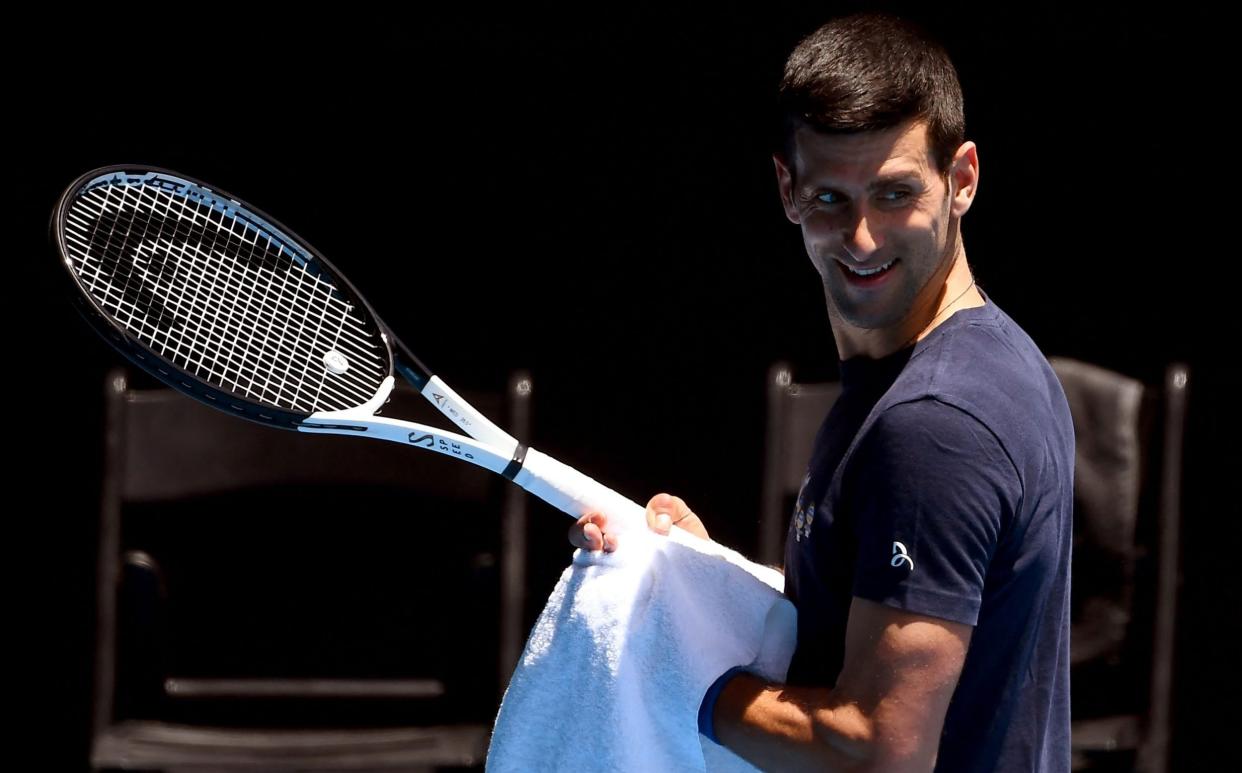Novak Djokovic statement: The unanswered questions World No 1 and his team now face

Novak Djokovic has finally broken his silence about why he repeatedly appeared in public shortly after being “diagnosed” with coronavirus.
But his statement on Instagram left many unanswered questions about something upon which he relied to gain entry to Australia and defend his Australian Open crown.
Why did Djokovic not announce last month that he had tested positive?
Djokovic did announce he had tested positive the first time he says he had Covid-19, following the notorious Adria Tour in June 2020. Other tennis players to contract the disease, including Sir Andy Murray, Emma Raducanu and Rafael Nadal, have either revealed their own positive tests or allowed them to be made public. Djokovic’s failure to do the same last month compounded his “error of judgment” in attending an interview and photoshoot with L’Equipe the day after he says he learned his test result. He may also have deprived those he saw the day before that commitment – including groups of children – the opportunity to check whether he had passed the disease on to them.
The reputational damage Djokovic suffered over the Adria Tour and his own anti-vaxx views might have made him reluctant to announce another positive test. But news of it was bound to come out upon him flying to Australia, with the secrecy surrounding it merely making matters worse. He could also now face a fine in Serbia for breaching rules stating he should have quarantined for 14 days or until he produced a negative test.
Why have inconsistencies been found in the online footprint of his positive test?
Documents submitted by Djokovic for his deportation hearing showed his positive test had been recorded on December 16. However, when journalists began scanning a QR code attached to the document, they say they were taken to a website that showed a negative result, only for it then to show a positive one during subsequent checks. German publication Der Spiegel carried out further analysis in conjunction with Zer Forschung which they say casts doubt on the December 16 date, with the timestamp from the web page for the result of the test indicating the page may have not been created until December 26.
They also point out the confirmation code for that result is a larger number than for his December 22 negative test, indicating the test may have taken place at a later time. Djokovic’s statement did not address this but did refer to “misinformation” about his activities in the build-up to his positive test. Serbian authorities have yet to comment.
Why was he granted a medical exemption to play at the Australian Open if the deadline for applying was December 10?
Tennis Australia set a cut-off of December 10 for medical exemptions but must have extended this for Djokovic. He and the governing body have yet to explain why this was allowed to happen, despite having had days to do so.
Will all this – and his admission that an answer to a key question on his Australian Travel Declaration had been false – see him thrown out of the country?
It cannot help his case if the Australian government is looking for reasons to deport him. The false ATD submission and the breaching of Serbian quarantine rules could be deemed as aggravating circumstances when weighing up a decision that probably still hinges on whether a positive Covid-19 test was a valid reason for an unvaccinated non-resident to be granted quarantine-free entry to the country. The Australian government has previously insisted it was not.
What would Djokovic have done had he not tested positive?
His refusal to be vaccinated meant a medical exemption was Djokovic’s only hope of being allowed to play at the Australian Open. He told border officials he had tested positive twice for Covid-19, once in June 2020 and again almost a month ago. Given he should have been tested routinely in the intervening 18 months, it might appear a remarkable stroke of good fortune for him to have avoided a second positive until the time he needed it most. Then again, the omicron variant of the disease is considered more contagious and has been particularly rampant this winter. So it could easily be that December 16 was simply his lucky day.

 Yahoo News
Yahoo News 
